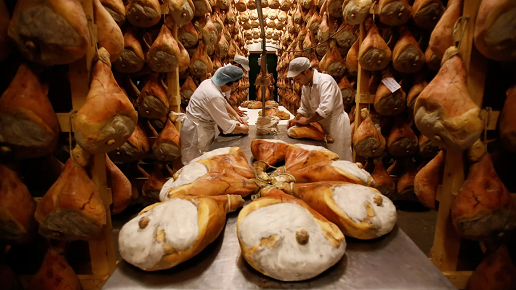According to The Star, over the past 20 months, the Tourism, Arts and Culture Ministry has been working hard to help revive the industry, and today, the results are very clear for everyone to see.
Sure, this is what the ministry is supposed to do anyway, but honestly there is actually little that it can do without jeopardising the country’s ongoing efforts to fight the virus.

Jonker Street in Melaka may not be as busy as it used to be, but local tourists have been making their way there since the ban on interstate travel was lifted. (Photo / Provided by The Star, LEESAN)
The Langkawi travel bubble pilot programme that kicked off on Sept 16 was one of the most important moves made by the ministry, and thankfully, the programme became a success. It also paved the way for the resumption of interstate travel – which automatically restarted tourism activities – in Malaysia, as well as the resumption of outbound international travel for leisure.
And from Nov 15, the Langkawi international travel bubble programme will begin, which means fully vaccinated tourists from overseas are allowed to enter the island and holiday without the need for quarantine.
I’m sure more international bubble programmes will be launched soon.
Obviously, travel operators are more than happy to welcome such initiatives, even though some may still have a hard time adapting to the changing environment.
It is said that the tourism industry makes up 15.9% of the country’s GDP (gross domestic product) in 2019, but I do not think this is accurate as it does not seem to include the number of people working in the industry. After doing some research, I managed to come up with a rough figure; If we were to also include employees’ family members, at least 2.5 million Malaysians rely on the industry to make a living.
As such, every decision made by the ministry will not only impact the country’s economy but will also help sustain a living for a large number of tourism industry workers like myself, who have not been able to get much income for over 20 months now.
As a matter of fact, I think that many of us in the sector may still need to go for at least another six months without much income, and I am pretty sure everyone is well aware of our predicament.
That said, after this disastrous ordeal, how many are still willing to go back to the tourism industry?
Sure, since the interstate travel ban was lifted on Oct 11, we have seen new opportunities popping up in domestic travel activities. Although this may not directly benefit local travel agencies or tour guides, at least it offers much-needed breathing space for some in the industry, especially transport service providers, hotels, homestay owners, F&B operators, souvenir makers and more. This will lift the overall tourist economy.
Or at least, these folks will have some income to survive another month.
The Star says, as for me, I am all geared up to lead tours again, starting with some domestic packages. We are leasing a few tour coaches from a local company, and its young boss (and driver) has given us a very good deal, in which we only need to pay for the basic rental. “We’ll bear the cost together, as long as the travel fraternity gets to start work too, and the industry gradually recovers,” he tells me. To do this, Keith has to default on 20 months of loan, but he is determined to help everyone as much as he can.
I hope the government, especially the Tourism, Arts and Culture Ministry knows that they are not fighting this “war” alone; travel operators nationwide have made – and will make – remarkable sacrifices for the industry’s recovery, too.
We are still not out of the woods yet, and I do hope that the ministry realises that there will be huge problems coming their way on this road to recovery, the first being severe shortage of experienced personnel. So many tourism and hospitality employees had no choice but to quit their jobs during the pandemic in order to survive, and it seems like most are not willing to re-enter the sector.
Also, many travel agencies are still cash-strapped and unable to resume their business. These companies need to have operating capital in order to restart operations.
Travel industry operators in Singapore, Taiwan, Japan, South Korea, and Australia are lucky to have been given special attention by their governments during these trying times. I do hope for the same in Malaysia.
To bring the travel industry back to pre-pandemic levels will necessitate careful planning and systematic implementation. It must never be rushed through.
At the same time, it is also critical for all travel frontliners to strictly adhere to the SOP in a bid to stop further spread of the virus. Do bear in mind that the travel industry has been beaten beyond recognition and will not be able to withstand another major impact anytime soon.
Fortunately, the reopening of the outbound sector has shown a glimmer of hope. Currently there are nearly 50 countries ready to welcome Malaysian tourists without imposing a mandatory quarantine ruling. However, upon returning to Malaysia, travellers will need to undergo a seven-day quarantine.
This will probably not boost the industry’s development.
Nonetheless, I have confidence that the quarantine period will very soon be shortened to just three days, or even be eliminated altogether. Our travel industry operators must prepare for this as much as they can, as it is expected that there will be a surge in both inbound and outbound tourists by the time that happens.
The Star mentions, that said, though, in the past 20 months, the global tourism industry has remained in a state of hibernation, with many simply winding up their businesses. Hundreds of travel agencies in Japan have closed down; the largest British travel coach operator has also suffered a similar fate. Countless hotels, airline companies and tour group restaurants have shuttered, while drivers, guides and pilots have switched to other jobs. It is almost impossible to get an instant quotation from these service providers now.
Everything has to start anew.
Almost all the “old” itineraries are no longer applicable to the post-pandemic environment. Airline schedules and travel plans have to be redesigned. Among the new factors that must be taken into consideration are shorter travel durations, fewer stops, smaller groups, Covid-19 insurance coverage... all these need to be rearranged, and it is not as easy as you think. We need to adapt ourselves to a completely different operating environment.
Having said that, I believe those of us in tourism have the same travel DNA in our blood. We will continue to devote ourselves to the industry and work together to bring about its full recovery.
Let’s travel together and see you on the next journey soon!







